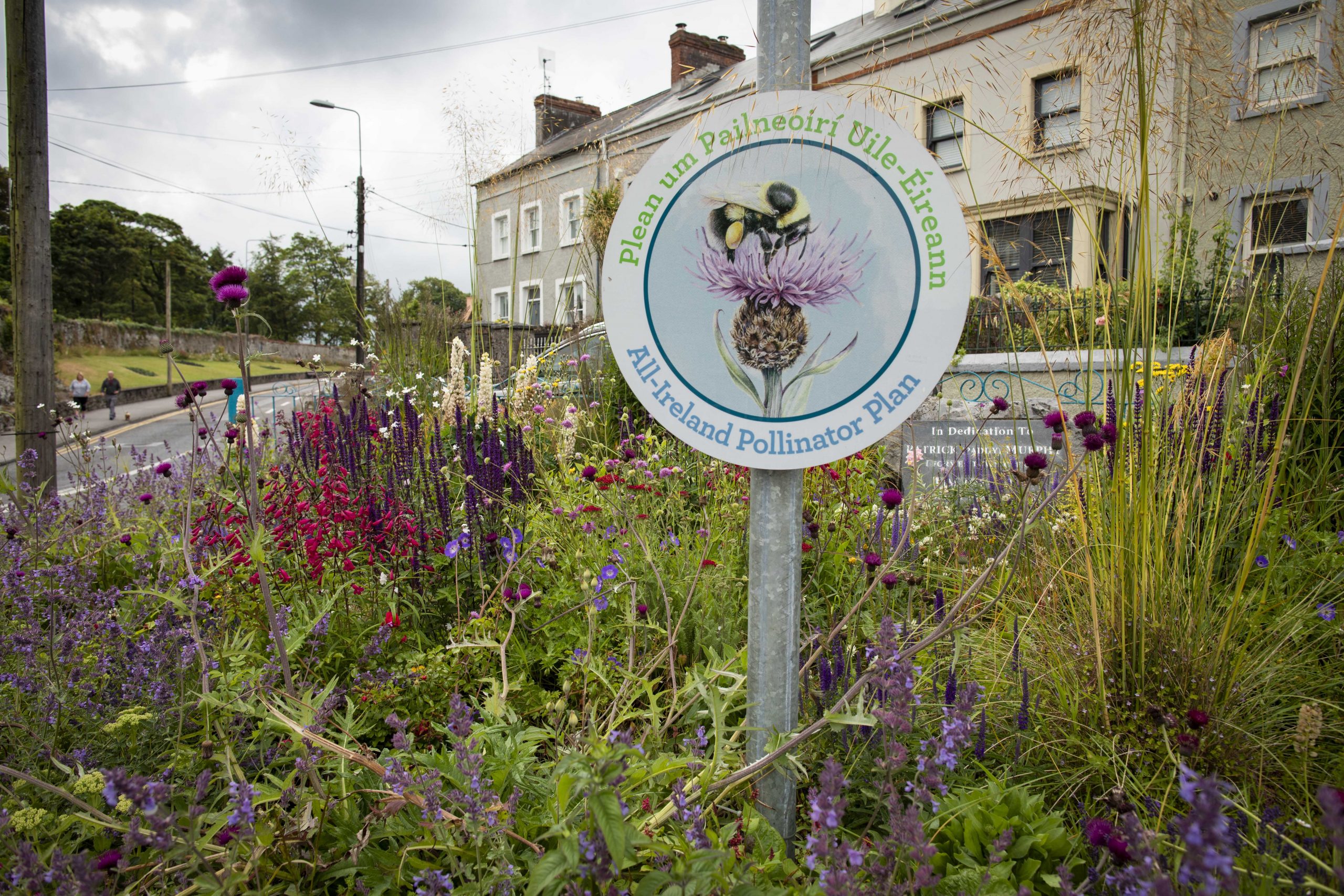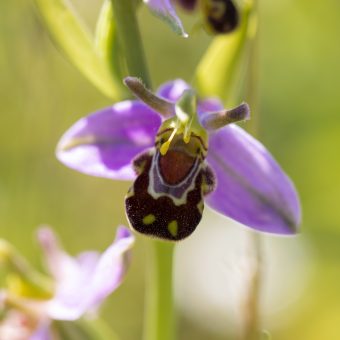The towns of Carrigaline, Kinsale, Bantry, Macroom, Kanturk and Fermoy are set to become brighter and more bee friendly with the anticipated roll-out of Cork County Council’s Pollinator Plans. These plans guide the Council’s management of publicly owned spaces within the towns, to ensure bees, and other insects that helpfully pollinate our flowering plants, are encouraged and supported.
Mayor of the County of Cork, Cllr Mary Linehan Foley, welcomed the initiative saying:
We’ve seen the Midleton Pollinator Plan become a great success with some surprising results like the appearance of rare orchids, and I’m delighted to see that six more Cork towns are to follow suit. Sadly, the populations of many of our pollinator species are declining, with about one third of our native bee species threatened with extinction. We all know the importance of bees to food production. This is a timely mitigation from Cork County Council and will be a boost of beauty to each town. I look forward to seeing all the bright pollinator plants blooming in these towns come Spring.
Chief Executive of Cork County Council, Tim Lucey, commented:
Cork County Council is identifying and implementing new strategies for the management of public spaces in our towns, to promote biodiversity and provide food and habitats for our wild pollinator species, which are an essential component of a healthy environment. The Pollinator Plans are being led by a consultant ecologist and are inspired by the success of the first Town Pollinator Plan in the county, prepared by Cork County Council for Midleton in 2019. We hope to extend the project to include additional towns in the coming years.
Pollinator Plans for Carrigaline, Kinsale, Bantry, Macroom, Kanturk and Fermoy will see existing habitats of high value for pollinators identified and protected; the variety and extent of flowering plants available to pollinators increased, with less intensive approaches to management of grass cutting in our parks, roadside verges and other green spaces; new pollinator friendly planting proposals; and the creation of new nesting habitat for pollinators.
Funded by the National Biodiversity Action Plan fund and Cork County Council, and in collaboration with community groups in each of the six towns, pollinator friendly strategies will be developed in accordance with All-Ireland Pollinator Plan Guidelines.
Notes:
Do Your Bit for Pollinators!
- Let the Dandelions bloom: wait until late April to do the first grass cut. This allows some Dandelions to flower, providing bees with much needed food in the spring.
- Avoid using pesticides along roadside verges or at the base of trees: strim instead, or let the grass here grow to provide food for pollinators.
- Protect hedgerows, dry stone walls and earth banks: especially when south facing. These areas are important nesting sites for solitary bees. Avoid using pesticides on these areas.
- Create a ‘6-week meadow’: cut small areas or strips of grass on a 6 week rotation to provide more wildflowers for pollinators.
- Log your actions: if you take any pollinator-friendly measures, please log them on the publicly available mapping system, Actions for Pollinators at https://pollinators.biodiversityireland.ie
Pollination is an essential process which allows for the reproduction of food crops, fruiting trees, flowers and the wild plants of our hedgerows, woodlands, grasslands, wetlands and other habitats. Insect pollination involves the transfer of pollen from one plant to another by bees and other insects. As they move through the landscape hunting for nectar, these tiny animals carry pollen from one plant to the next and thereby allow for the fertilisation and reproduction of the plants that they are visiting.
The pollinator species most people may be familiar with is the honeybee. However, Ireland has many native wild pollinator species including bumblebees and our solitary bees (97 native bee species), butterflies, moths, hoverflies and other insects. These native pollinators are an essential component of a healthy environment.
Like all animals, our pollinators need adequate supplies of food provided by a range of flowering plants throughout their life cycle. They also need places to nest. Pollinators can nest in long grass, in burrows in bare earth, or in crevices in old walls or wood, depending on the species. As landscapes have become more intensively managed and tidied up, there is less food and fewer sheltering opportunities for many species. This is a primary cause in the decline of pollinator species.
For more information on Pollinators and the All Ireland Pollinator Plan, go to www.pollinators.ie
Want to get €5, absolutely free? Sign up to the ‘Smart’ Debit Card – Curve today, and earn a fiver on us! Find out more here.



